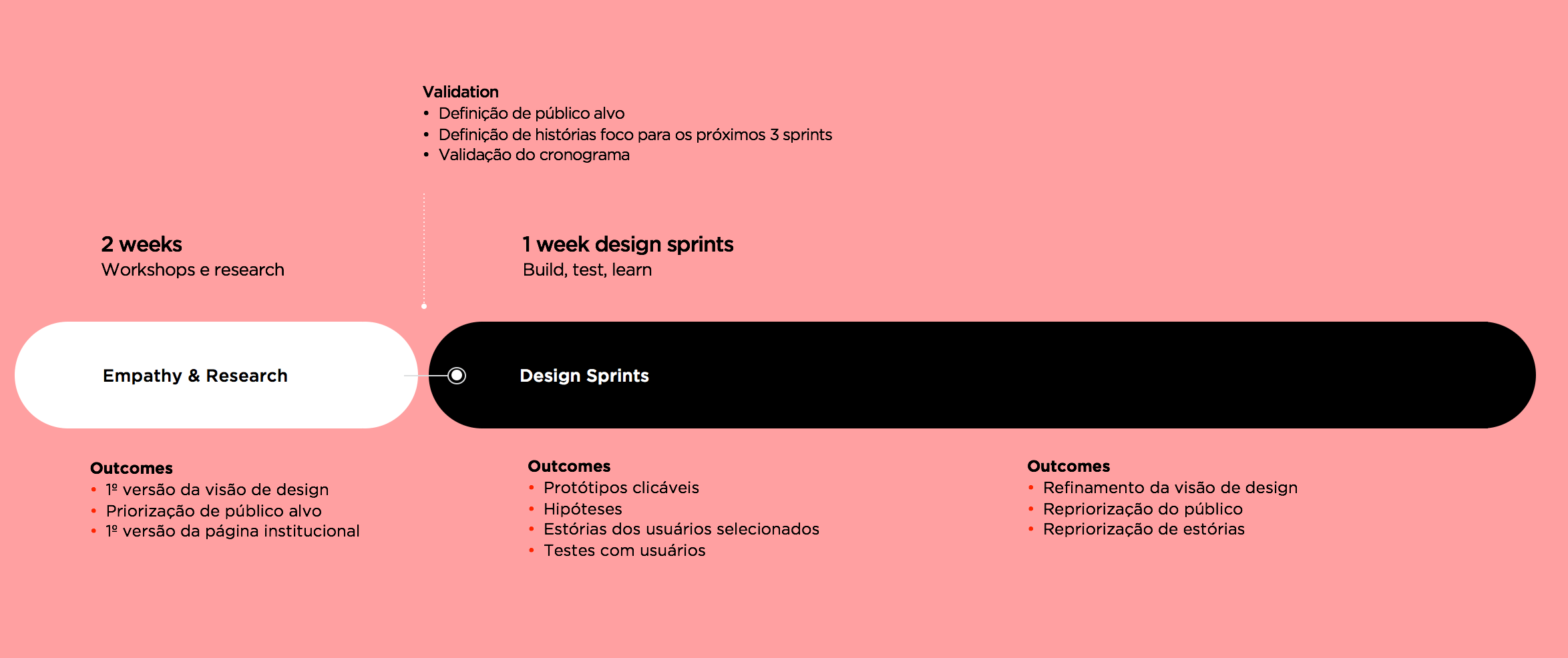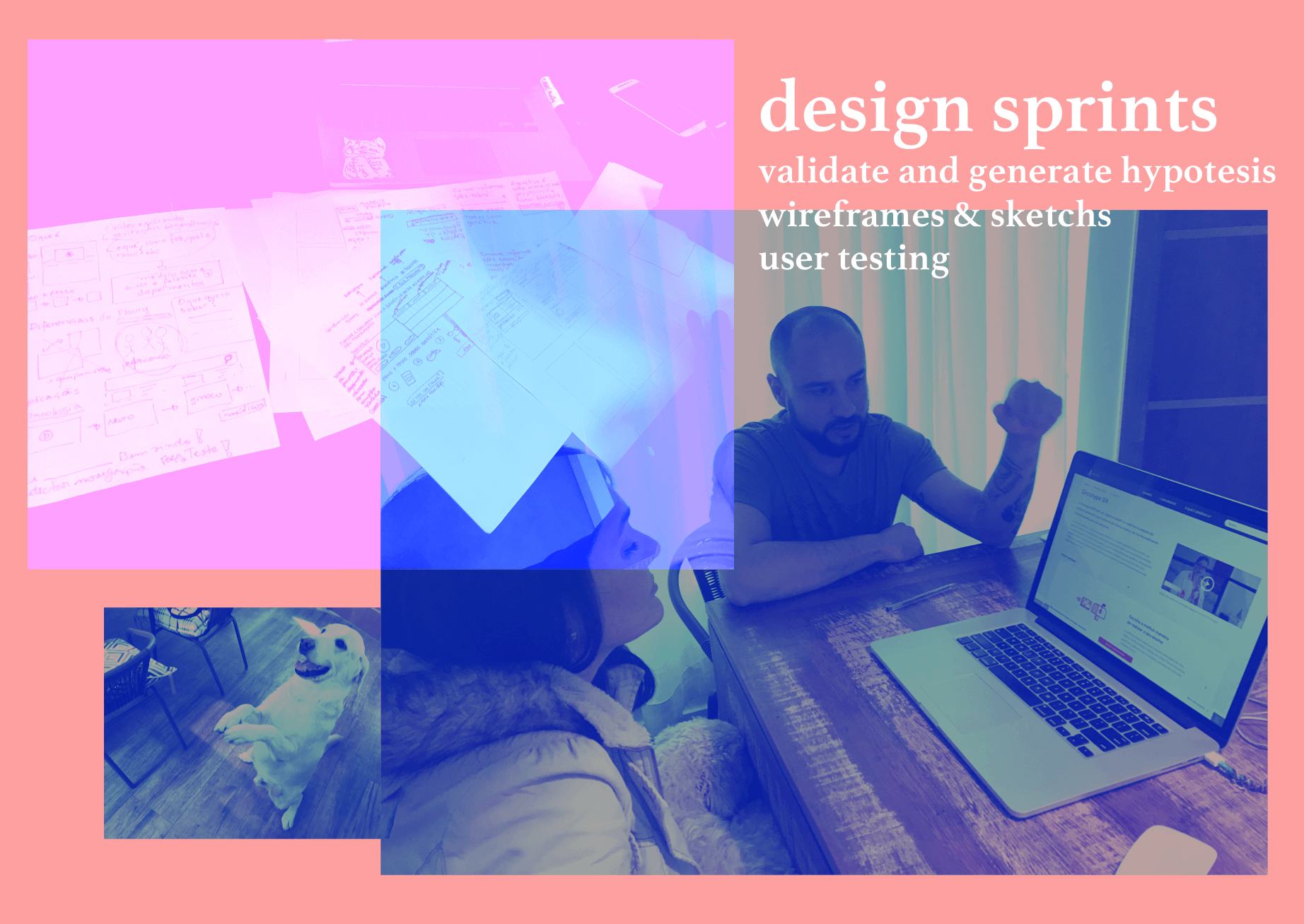< return to projects
Genomic testing: bringing hope for difficult diseases & life development.
The challenge
To assist doctors and patients in the diagnosis through genomic testing with the launch of agile products and services to the market.
Genomics today is not known by doctors or patients. Startups are working fast to bring solutions and Fleury wants to position itself and be the reference for them offering the best service.
our process

1. Empathy weeks (Discover)
2. Design Sprints (Envision, Testing & Deliver)
Instead of using the classic service design methodology - which takes more time and resources, we opted for a faster approach. How can we deliver something fast to the market that works and answer the user needs without a complex research and previous interaction with the user? We decided to start with 2 intense weeks of workshops & co-working with Fleury to gather information and knowledge about the business and the user and did some working sessions to brainstorm, prioritize ideas and generate hypothesis for the project.
Me: Project planning, workshop planning and running, study of different agile and sprints based methodologies

The outcomes of the workshops were definitions of business directions for the project, personas, journey of the user, and hypothesis to be validated.
making it tangible
From the hypothesis, in a short time we have explored, prototyped and validated with real users the solutions. For this we started intense weeks of full-time co-working with Fleury and we started already the first week with an idea to be tested from the hypothesis. By the end Fleury business stakeholders were using Sketch and we almost graduated on DNA. Sharing is caring.
We used a process based on Google Sprints:
1. Map > 2. Sketch > 3. Prototype > 4. Test > 5. Refine & Learnings -> Production with constant Q&A > Repeat!

1. Wireframes and flows from the Sketching day. 2. User testing with my friend @JamesEduardo 3. Much more cool when the user has a dog
constant learning & improvement
As the weeks passed by, our knowledge about the user were growing as we design and test. One of the most valuable learnings were what the weekly and constant testing of our hypothesis and design helped to make decisions in a short time and create solutions that makes sense for the users.
"As we interviewed and tested we even figured out that some users have a historic in their families of difficult diseases and even the copy we wrote, pictures or colors had to be put in order to make them feel secure, as they will do the test maybe waiting for a negative diagnosis”.
On the first hypothesis sometimes they felt uncomfortable and insecure to continue ordering the test.. by the last week of the project, the patients could feel secure and ready to face this challenge in their lives.
